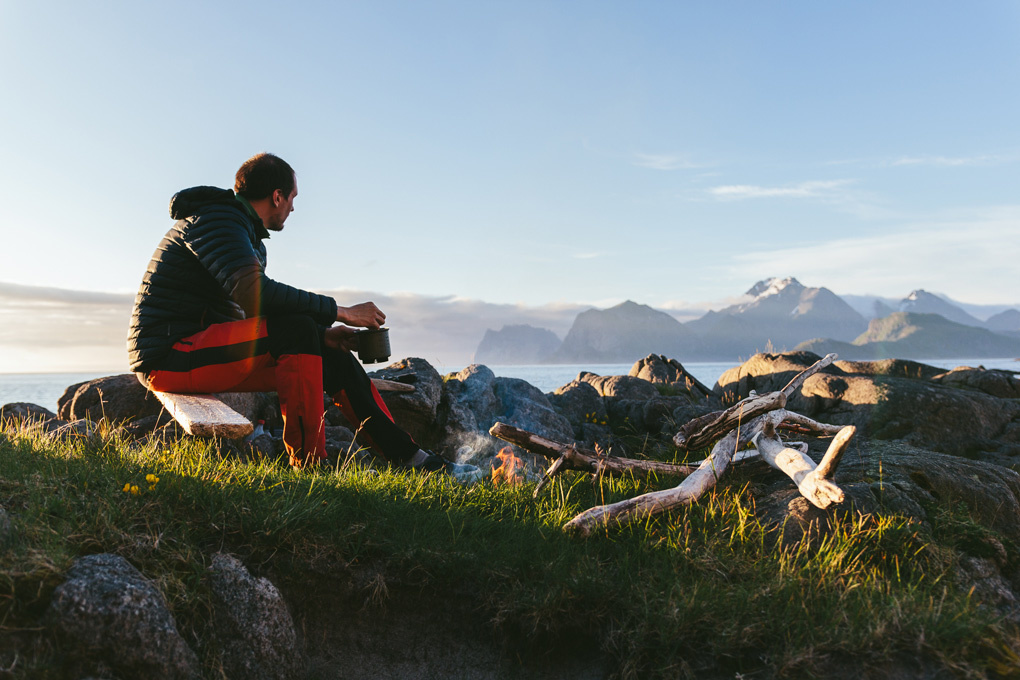From the majestic remote landscape of the Lofoten Islands comes this impressive aerial video created by Theo Gove-Humphries. Having just purchased a brand new DJI Phantom 4, he didn’t waste any time putting it to good use in a week-long outdoor excursion across the Islands in June 2016. There were several challenges that were faced in the filming of this project, and after you enjoy the video, Gove-Humphries shares with Fstoppers what he learned through it all.
“Lofoten Landscapes” is filled with breathtaking cuts filmed in 4K at 25fps on a Phantom 4 quadcopter. Surprisingly, Gove-Humphries is still fairly new to flying drones and one of his goals for this trip was to dive right in and learn. “I'd only flown a drone a few times before I arrived, so for me it was the best possible training ground,” he said.
And a training ground it was. Situated off the northwestern coast of Norway in the Arctic Circle, The Lofoten Islands can experience some extreme winds. “Often sun would be shining with perfect light, but the wind was just too powerful to risk taking off,” Gove-Humphries said. He recalled one incident in a remote part of the islands where he hiked up the mountainside and found perfect light hitting the valley below. “[I convinced] myself it would be OK to fly, but deep down I knew I shouldn't risk it,” he shared. “As soon as I started the motors the Phantom 4 flipped upside down and skidded down some rocks, but luckily the drone was fine.” After replacing the propellers with some spares, he was ready to continue on.
Another thing Gove-Humphries learned early on while flying and filming for the project was to take things slowly. He said that by flying the quadcopter fairly slowly it created a more cinematic shot and had the feel of being filmed from a helicopter. Viewing the final footage I’d have to agree. Flying too fast would make it much more difficult to connect with anything in the foreground, and the beautiful shots of the bird flying over the glass-like lake or the boat coming into harbor would probably lose some impact.
Between camping for days at a time in the mountains and living out of a rental car for the rest of the week, you can surely expect staying powered up was a problem. With only three batteries for the Phantom, Gove-Humphries had to pick and choose his shots carefully. “Timing was everything,” he said. “I could take the drone up, get a few shots, move location, and repeat on one battery.” Back at his car he would at least have the luxury to use a 12V car charger to charge batteries while traveling to the next location.
Time is a bit double-edged here. A week is a long time to make things work on batteries, but it’s not a lot of time to get footage in such an interesting location. The unique thing about the Lofoten Islands in June, however, is that there is 24-hour daylight. You just have to be willing to make the abundance of light work for you. “Lets just say I didn't sleep much,” said Gove-Humphries.
The challenges faced have their rewards, however. All of the shots are very solid and could work just as well as a still photograph hung up as art on a wall. Out of the resulting footage, Gove-Humphries tells me his favorite scene is the bird’s eye view over the foggy forest (0:05). “As soon as I saw the scene I knew I had to get up, but look down,” he said. “In the grade adding some contrast back into the image really made it pop.“
You can see more of Gove-Humphries’ work on Vimeo.
All images used with permission.












Beautiful video!
I've been doing photography for quite a while, and I always get sad when I see some of locations explode in popularity. It seems to happen every few years. Most recently, about 6 years ago, I made a trip to Patagonia in Chile to visit Torres del Paine National Park. Back then, it was still pristine nature. Was it empty? Not at all. But it had nowhere near the amount of visitors you'd see in most National Parks here in the States. I went again about half a year ago, and even though I expected it to be much busier, I was in shock by how absolutely busy it was for a place that had been somewhat deserted six years ago at pretty much the exact same time of year. And it's easy to see what happened. You have a few well known photographers who made some extraordinary photos from the areas, which drew out many amateur and professional photographers out there. As you then have more and more photographs of the area showing up on the internet, then regular tourists not necessarily interested in photography also become part of the tourist population.
The Lofoten Islands are another area I see this happening to. Five years ago I had not even heard of the area. Now, it seems, I can't go a week without seeing another time lapse, or video, or even photo series of the area.
I'll admit it, part of my apprehension about that whole process is the fact that I want to photograph in solitude, knowing that 20 other people aren't going to come home with a similar photograph from that same day. It's an insanely beautiful area, but seeing it crowded I think takes away from the splendor of it.
By the way, I'm not blaming the videographer at all. But it was the posting of yet another series from this area that kind of evoked those feelings in me.